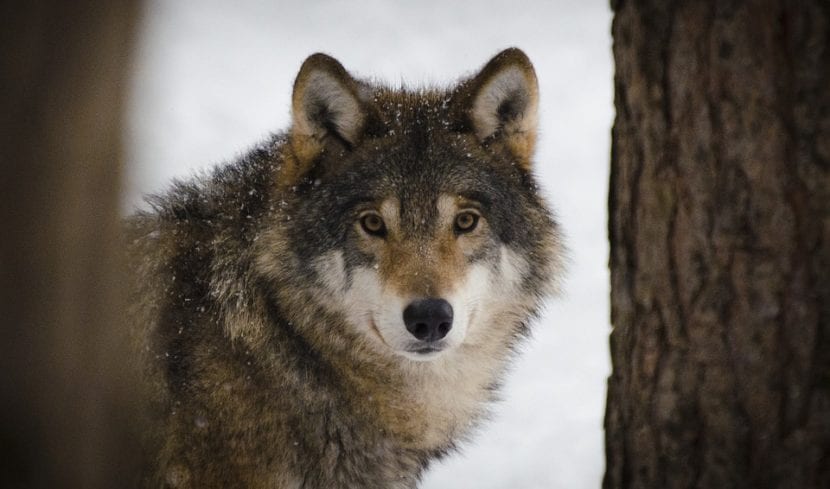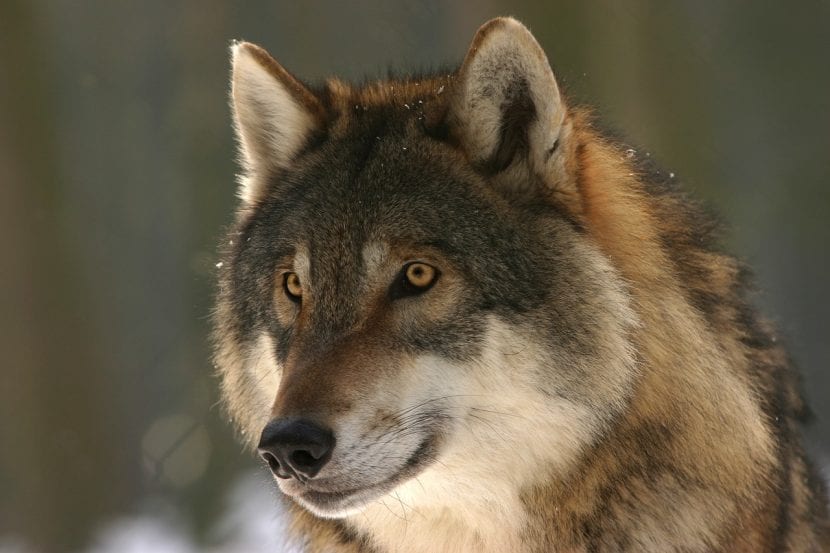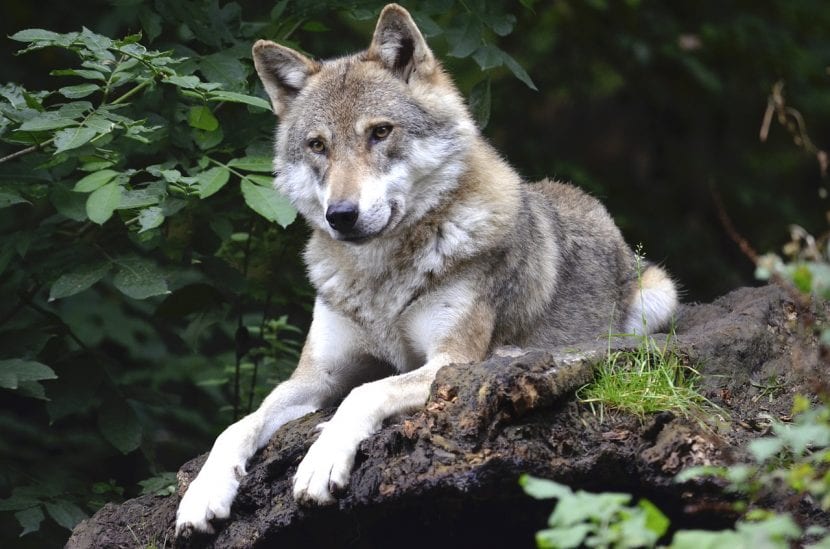
Although dogs and wolves have a common ancestor, we know well that the line that separates them is well defined. However, they also have quite a few similarities, so that sometimes many doubts arise about the behavior of both animals, especially when we talk about hybrid dogs and Nordic dogs.
Therefore, If you want to know more about the differences between wolves and dogs, this article will be useful.
Same name, but different last name

Both wolves and dogs belong to the same zoological species: Canis lupus. This is so because they have an ancestor and both physical and behavioral characteristics in common. Now, his last name is different. For example, while the dog is Canis lupus familiaris, the wolf depending on its origin has others:
- canis lupus lupus: Eurasian wolf.
- Canis lupus comunis: Russian wolf.
What are the physical differences between dogs and wolves?
Dogs and wolves are animals that, today, are very different from each other. The domestication process has wanted the dogs to adopt very different sizes and shapes, distancing themselves more and more from the wolves. Thus, what differentiates them is:
- Size: while wolves all have more or less the same, in the case of dogs this is not the case. We have the Chihuahua that weighs less than 2kg, and the Mastiff that can exceed 70kg.
- Snout: that of dogs is short, but that of wolves is long.
- Ears: those of dogs can be down or straight, but those of wolves are always kept upright (except puppies).
- Fur: the coat of dogs can be short, semi-long or long, of very different colors (white, brown, bicolor, black,…). The one with the wolves is rather short and there is not so much variety of colors.
What are the differences in the digestive system of dogs and wolves?
Although both are carnivores, due to domestication and having given them a great variety of foods for many years the digestive system of dogs has adapted and now they can usually digest starch.
For this reason, they do not usually have problems, but this does not mean that they can be given anything: the best diet for them is still carnivorous. In fact, if we can afford to give them Barf or Yum, we will make sure that their health will be very good.
How do dogs and wolves behave?
The behavior of both animals is similar but not the same:
- Wild life: Wolves can - and should - live in the wild. That is its habitat. They are predatory and self-sufficient. In addition, by their own instinct they know that they should not reproduce in times of food shortage.
Dogs, on the other hand, are dependent on humans to get food. Proof of this are the poor furry people who have had the bad luck of meeting bad people who did not mind leaving them abandoned in any corner, as if they were objects. - Socialization: Dogs, by nature, are sociable, although of course there are some more than others. Wolves are more territorial and reserved.
- Family: both dogs and wolves live in family groups, but wolves establish a reproductive pair which will only dissolve when one member of the pair disappears or dies.
- Bark: dogs bark, but wolves growl and howl at the moon.

Wolves are magnificent animals that we must respect. Its population is at risk due to the invasion of humans in its habitat, and because of that desire that it still has to hunt it or to use it to cross it with dogs. Let's do what we can to prevent it from being endangered again.